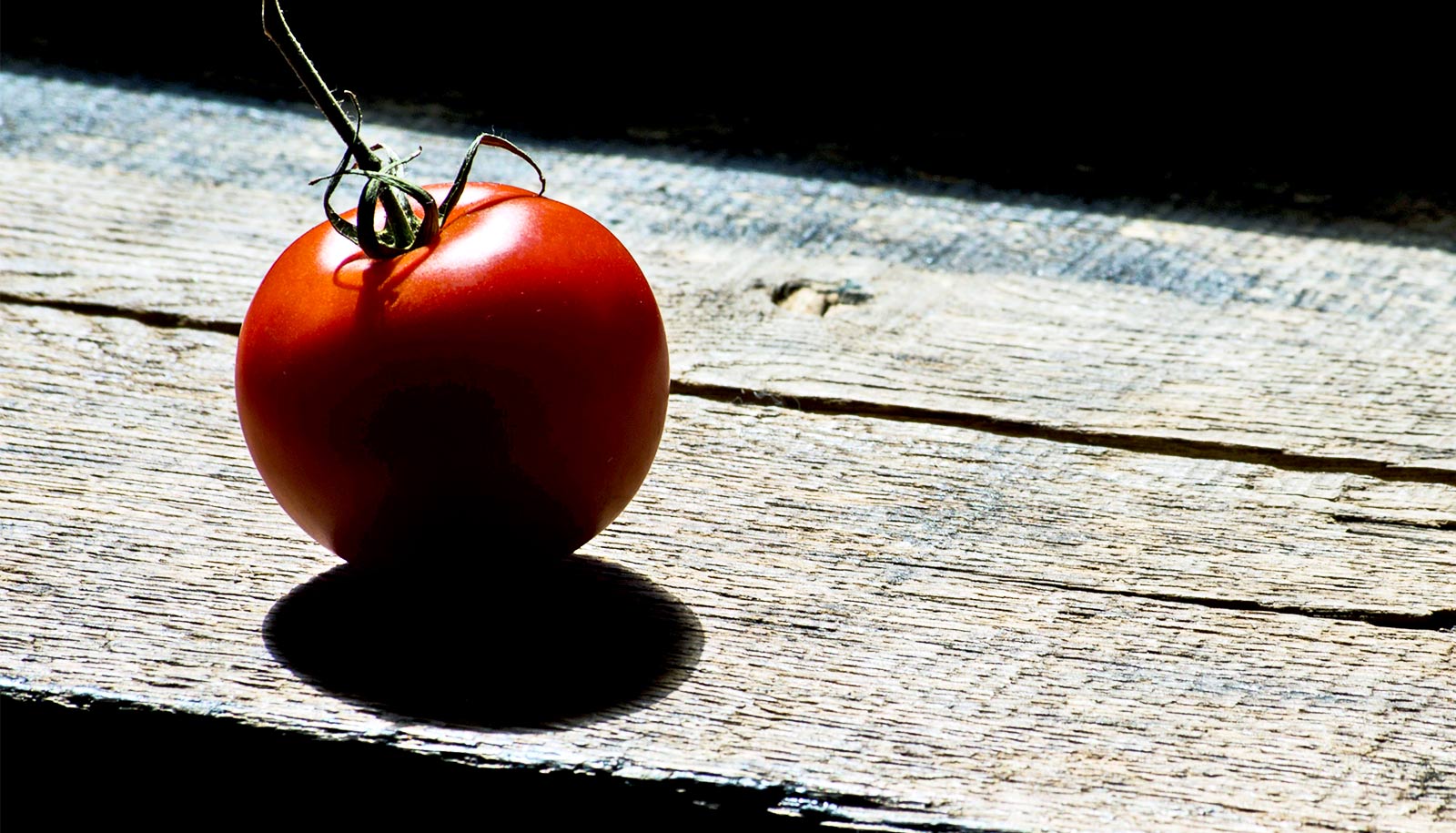Researchers have identified an evolutionary function in wild tomato plants that modern plant breeders could use to create pest-resistant tomatoes.
The study traced the evolution of a specific gene that produces a sticky compound in the tips of the trichomes, or hairs, on the Solanum pennellii plant found in the Atacama desert of Peru—one of the harshest environments on Earth. These sticky hairs act as natural insect repellants to protect the plant, helping ensure it will survive to reproduce.
“We identified a gene that exists in this wild plant, but not in cultivated tomatoes,” says Rob Last, professor of plant biochemistry at Michigan State University.
“The invertase-like enzyme creates insecticidal compounds not found in the garden-variety tomato. This defensive trait could be bred into modern plants.”
“…how can we increase crop yield by creating a pest-resistant plant and eliminate the need to spray fields with insecticides?”
Last explains that modern cultivated tomatoes make fewer of the compounds found in wild plants because—unaware of their adaptive function—breeders removed undesirable traits such as stickiness.
Bryan Leong, plant biology graduate student and co-lead author, is interested in how the wild plants evolved to be insect-resistant.
“We want to make our current tomatoes adapt to stress like this wild tomato, but we can only do that by understanding the traits that make them resistant,” says Leong.
“We are using evolution to teach us how to be better breeders and biologists. For example, how can we increase crop yield by creating a pest-resistant plant and eliminate the need to spray fields with insecticides?”
Advances in technology allowed the team to apply genetic and genomic approaches, including the CRISPR gene-editing technology, to the wild tomato plant to discover the functions of specific genes, metabolites, and pathways.
Using these new techniques, the team identified an invertase-like enzyme specific to the cells at the tips of the sticky hairs. Invertases regulate many aspects of growth and development in plants. In the wild tomato, the enzyme evolved to facilitate the production of new insecticidal compounds.
“Plants are amazing biochemical factories…”
“It is a race over evolutionary time between the consumed and the consumers,” says Leong.
“Insects benefit by eating the plants. Yet, evolution favors plants that make more seeds and pass on their genes to another generation. We hope to take the defensive lessons plants already learned and apply them to existing crops.”
This discovery is a step toward understanding the natural insect resistance of Solanum pennellii plants, which could enable introduction of this trait into cultivated tomatoes using traditional breeding practices.
“Plants are amazing biochemical factories that make many unusual compounds with protective, medicinal, and economically important properties,” says Cliff Weil, a program director at the National Science Foundation, which funded this study.
“In this study, the authors found that a common enzyme has been repurposed for forming such compounds, giving us important insight into how life is able to bend existing tools for novel uses.”
The study appears in Science Advances. A National Institutes of Health Plant Biotechnology for Health and Sustainability graduate training grant funded the study.
Source: Michigan State University


